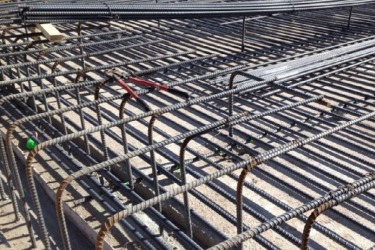The International Zinc Association (IZA) Africa is spotlighting the crucial role of zinc-based coatings in preserving the integrity of steel infrastructure across industries — from construction and energy to transport and mining.
For decades, zinc has served as steel’s frontline defence against corrosion. Now, as Africa accelerates infrastructure growth in challenging climates, zinc coatings are proving indispensable for sustainability, longevity, and cost efficiency.
The Science of Protection
Zinc safeguards steel through three interlinked mechanisms — barrier protection, cathodic (sacrificial) protection, and corrosion inhibition.
Barrier protection forms the first line of defence, isolating the steel from moisture and oxygen. When scratches or wear expose the surface, zinc continues to shield the steel through galvanic action, corroding first to protect the base metal.
Over time, corrosion by-products like zinc carbonate and zinc hydroxide create a self-healing film that slows degradation, delivering exceptional long-term durability even in harsh environments.
Hot Dip Galvanizing: Africa’s Proven Defence
The most widely used process for structural steel is hot-dip galvanising, where components are immersed in molten zinc at temperatures around 450°C. This forms a tightly bonded iron–zinc alloy layer that coats even recessed areas and internal cavities.
Batch hot dip galvanizing produces robust coatings exceeding 85 microns, offering decades of maintenance-free service for bridges, rebar, power pylons, and heavy steel structures.
In contrast, continuous hot dip galvanising — used for sheet steel — produces thinner coatings (15–20 µm per side) ideal for automotive, roofing, and consumer products. South Africa’s Chromadek Ultim and Bluescope Colourbond Ultra are prime examples, pairing galvanised bases with organic primers for both strength and style.

Innovation in Zinc Alloys
Advancements in alloy technology are expanding zinc’s protective power.
Galfan, a 95% zinc and 5% aluminium alloy with trace mischmetal, offers superior corrosion resistance and formability — particularly valuable for wire, strand, and tubing. Its microstructure corrodes more slowly over time, nearly doubling service life compared to conventional coatings.
Meanwhile, Zincalume (also marketed as Colourbond and Colourplus) is a combination of 55% aluminium, 43.5% zinc, and 1.5% silicon. The zinc-rich regions offer galvanic protection, while the aluminium forms a durable barrier layer once zinc is depleted — ideal for roofing, cladding, and architectural applications in the coastal areas.
Designing for Durability
“Engineers and specifiers must carefully distinguish between coating systems when designing for durability,” cautions Simon Norton, Director of IZA Africa.
“Batch hot dip galvanizing delivers vastly superior life expectancy compared to thin electroplated coatings, particularly for fasteners exposed to aggressive environments. Always specify hot dip galvanized bolts,” he urges.
Duplex systems — where powder or organic coatings are applied over galvanizing — offer extra aesthetic and UV protection but require careful design to prevent delamination and underfilm corrosion.
A Sustainable Future for African Infrastructure
Zinc coatings are more than a corrosion solution — they’re a cornerstone of sustainable engineering. By extending the service life of steel by decades, they lower maintenance costs, conserve materials, and reduce environmental impact.
“Zinc coatings represent a comprehensive engineering solution,” says Norton. “They combine barrier protection, galvanic action, and self-healing corrosion inhibitors to keep Africa’s infrastructure standing strong.”



